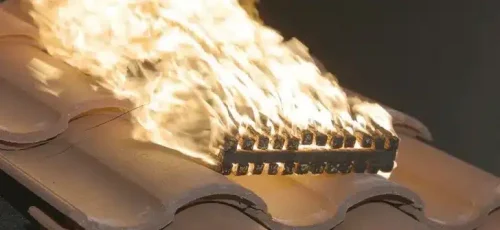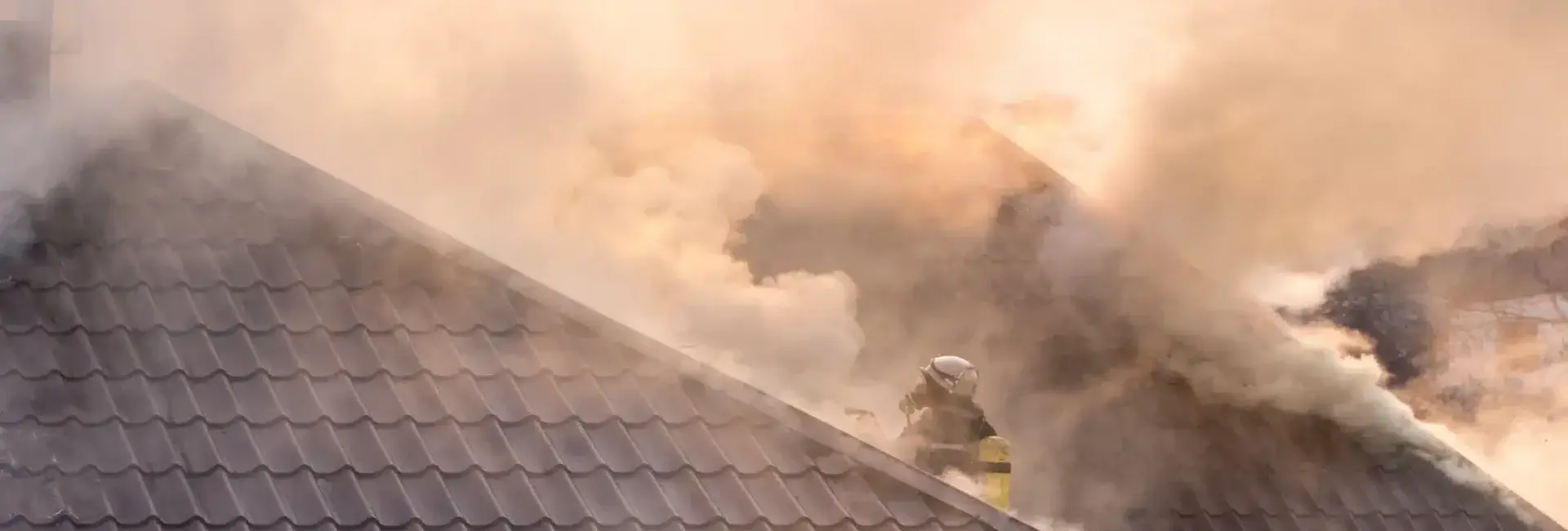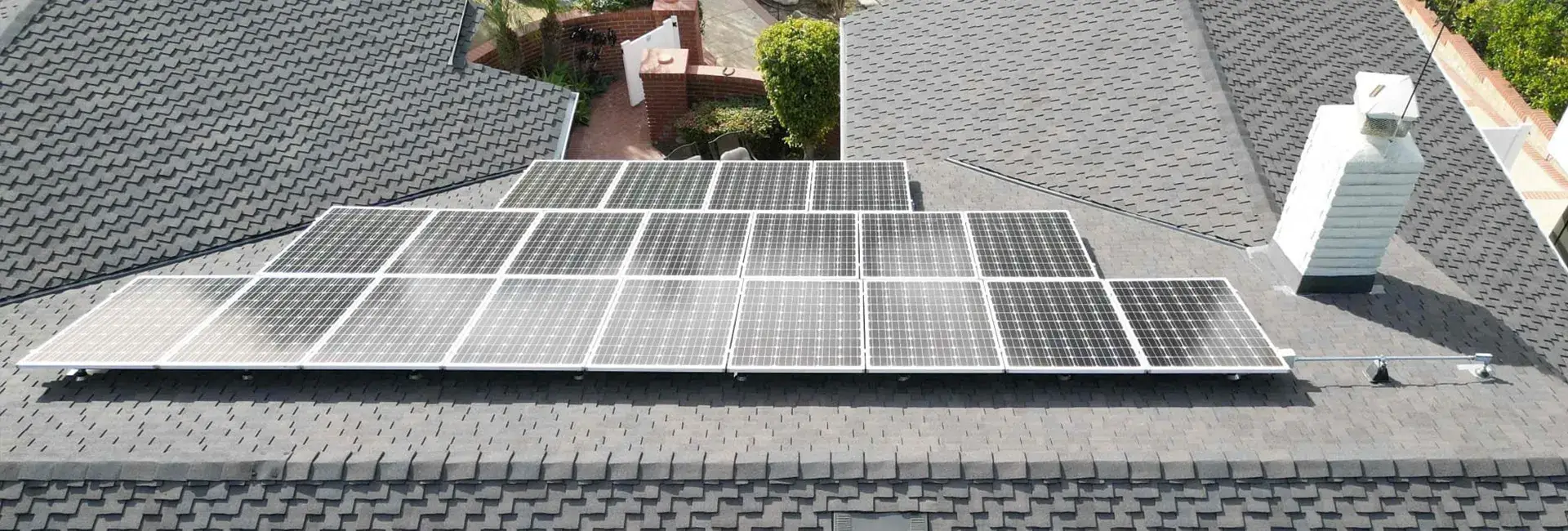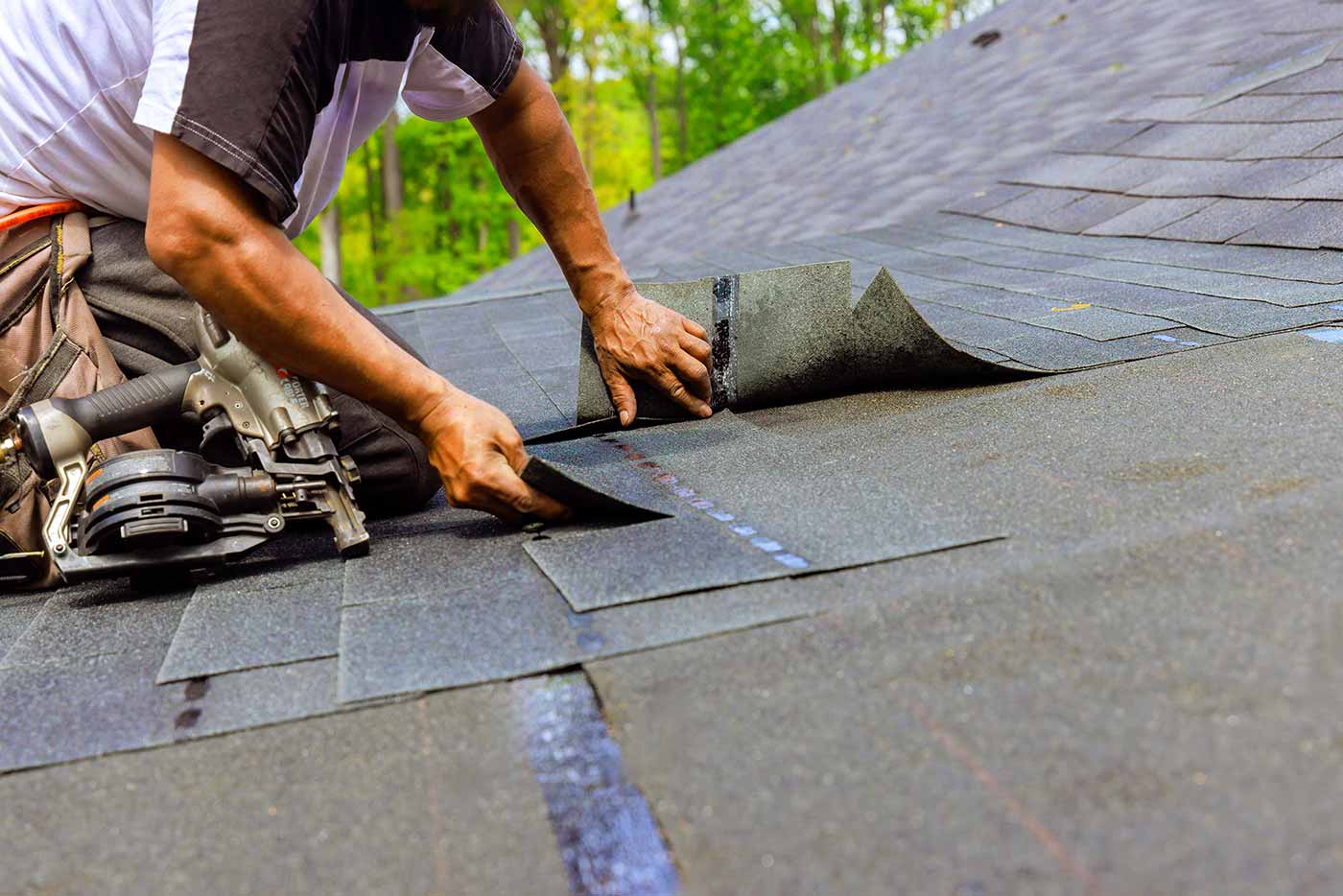The Hidden Weakness in Your Tile Roof
Tile roofs can last 50+ years, but the underlayment beneath them typically needs replacement every 25-30 years. Many homeowners don’t realize that their fire-resistant tiles might be sitting on underlayment that’s deteriorated or wasn’t fire-rated to begin with. During our recent inspections following the windstorms, we’ve found numerous homes with compromised underlayment that could create a serious fire hazard.
Why Upgrade to Fire-Resistant Roof Underlayment?
- When tiles crack or shift during high winds, the underlayment becomes your roof’s primary defense
- Class A fire-rated underlayment up to today’s standards provides crucial protection against ember penetration
- Damaged or aging underlayment can create hidden pathways for embers to enter your attic (most homes ignite from within)
- Insurance companies are increasingly looking at underlayment specifications when assessing fire risk

Signs You Need an Underlayment Upgrade
- Your tile roof is over 25 years old
- Recent wind damage has displaced or cracked tiles
- You notice leaks or water damage in your attic
- Your current underlayment isn’t Class A fire-rated (or you don’t know whether it is or not)
Selecting the Best Roof Underlayment: Class A Fire-Rated Materials
A Class A fire-rated underlayment serves as your roof’s vital defense against wildfire threats. This specialized material creates a formidable barrier against fire penetration, maintaining protection even if flames compromise your primary roofing tiles. While the cost difference between standard and Class A fire-rated underlayment is modest—typically just a small percentage of your total roofing investment—its defensive capabilities are substantial.
At LocalRoofs, we use a Class A underlayment that in rigorous testing conditions withstands direct exposure to wind-driven embers and extreme temperatures reaching 1,200°F, demonstrating its effectiveness as a critical fire-resistant barrier. When evaluating roofing options, prioritizing Class A fire-rated underlayment represents one of the most cost-effective investments in your home’s fire preparedness.

Upgrading to Fire Resistant Underlayment
Replacing underlayment requires carefully removing your existing tiles, replacing the underlayment underneath and any other roofing materials suffering from wood rot or other damage, then reinstalling your original tiles and resealing everything. While this is a significant project, it’s typically less expensive than installing an entirely new roof. Many of our clients are taking advantage of storm damage repairs to upgrade their underlayment, effectively turning a necessary repair into a valuable fire-safety improvement.
Long-Term Benefits
- Enhanced fire protection for your home
- Potential insurance premium reductions
- More peace of mind during fire season
- Extended life for your existing tile roof
Expert Recommendation
We strongly recommend upgrading to Class A fire-rated underlayment if your current underlayment is aging or damaged. It’s a crucial investment in your home’s fire defense system.
Contact a qualified roofing contractor like LocalRoofs to inspect your tile roof’s underlayment and discuss upgrade options. (We offer free roof checkups and estimates.) In our fire-prone region, this extra layer of protection could make all the difference when the next wildfire approaches.
Disclaimer: This article represents LocalRoofs’ professional opinion and is not intended as legal or insurance advice. Always consult your local building codes, insurance provider, and qualified professionals for specific guidance regarding your property.
When protecting your home from fire, it’s important to understand that even Class A fire-resistant roofing materials—while offering the highest level of protection available—cannot guarantee absolute immunity from fire. Fire-resistant materials are designed to resist ignition, slow the spread of flames, and maintain their protective properties for a specific time period when exposed to fire. This is fundamentally different from the commonly misused term “fireproof,” which implies complete invulnerability to fire—something that doesn’t exist in practical terms. Even the most advanced fire-resistant materials will eventually fail if exposed to intense heat and flames for long enough periods. That’s why fire resistance should be viewed as buying valuable time during a fire, rather than providing absolute protection.


